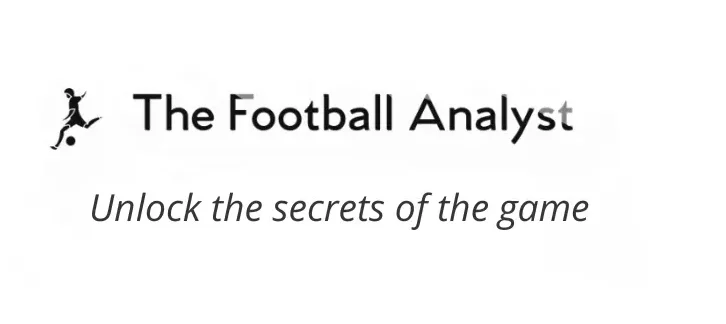Passing is one of the most fundamental aspects of football. At every level of the game – from grassroots to the elite professional stage – the ability to pass the ball accurately, quickly, and under pressure is essential. Teams that dominate possession, create consistent attacking opportunities, and control the tempo of a match all share one thing in common: outstanding passing quality.
But passing well doesn’t just mean playing a clean ball to a teammate. It involves decision-making, body positioning, vision, awareness, timing, and technique – all of which need to be trained regularly and in game-relevant situations. In this article, we break down the technical and tactical components of passing and offer several drills that can be used to develop both accuracy and speed in your players.
The Role of Passing in Modern Football
In today’s game, where space and time are limited, the margin for error in passing is smaller than ever. Elite teams such as Manchester City, Arsenal, Bayern Munich, and Barcelona have shown how effective structured passing patterns can dismantle even the most compact defensive setups. Their success is rooted in a philosophy of quick ball movement, intelligent positioning, and constant off-the-ball support – all made possible by high-level passing skills.
At the individual level, players who can pass under pressure, switch the play, or break lines with a single touch are incredibly valuable. Midfielders like Rodri, Toni Kroos, and Kevin De Bruyne offer textbook examples of how precise, well-timed passing governs both tempo and control. Therefore, whether coaching young players or senior squads, developing passing through focused and realistic training is non-negotiable.
Technical and Tactical Components of Effective Passing
To improve passing performance, we first need to understand the elements that contribute to it:
- Passing Technique: This includes how the ball is struck – with the inside, outside, or instep of the foot – and how the player adjusts their body position to deliver an accurate and weighted pass.
- First Touch and Ball Control: A good first touch sets up a better pass. Players must be able to control the ball smoothly to allow a clean second action.
- Speed of Execution: Time and space are limited in most matches. The ability to receive, assess options, and pass within seconds is key to maintaining fluidity.
- Scanning and Awareness: Players who scan before receiving can already visualize their next move, reducing hesitation and increasing passing effectiveness.
- Communication and Timing: Understanding teammates’ movement and intentions, along with timing passes appropriately, is vital – especially in tight spaces or transition moments.
- Decision-Making Under Pressure: A technically perfect pass is useless if it’s made to the wrong player or at the wrong time. Passing decisions must consider the game context.
Passing Drills to Improve Accuracy and Speed
Here are several training drills designed to develop these passing components. These drills can be used in isolation or as part of a larger session theme.
Drill 1: One-Touch Passing Squares
Purpose: Improve passing rhythm, body orientation, and one-touch execution in tight spaces.
Setup:
- 4 players form a square, each standing at a corner (5–8 meters apart).
- One ball is used, and players pass clockwise or counter-clockwise using only one touch.
Coaching Points:
- Players must stay light on their feet and ready to adjust body position.
- Focus on weight and direction of the pass.
- Encourage constant communication and scanning.
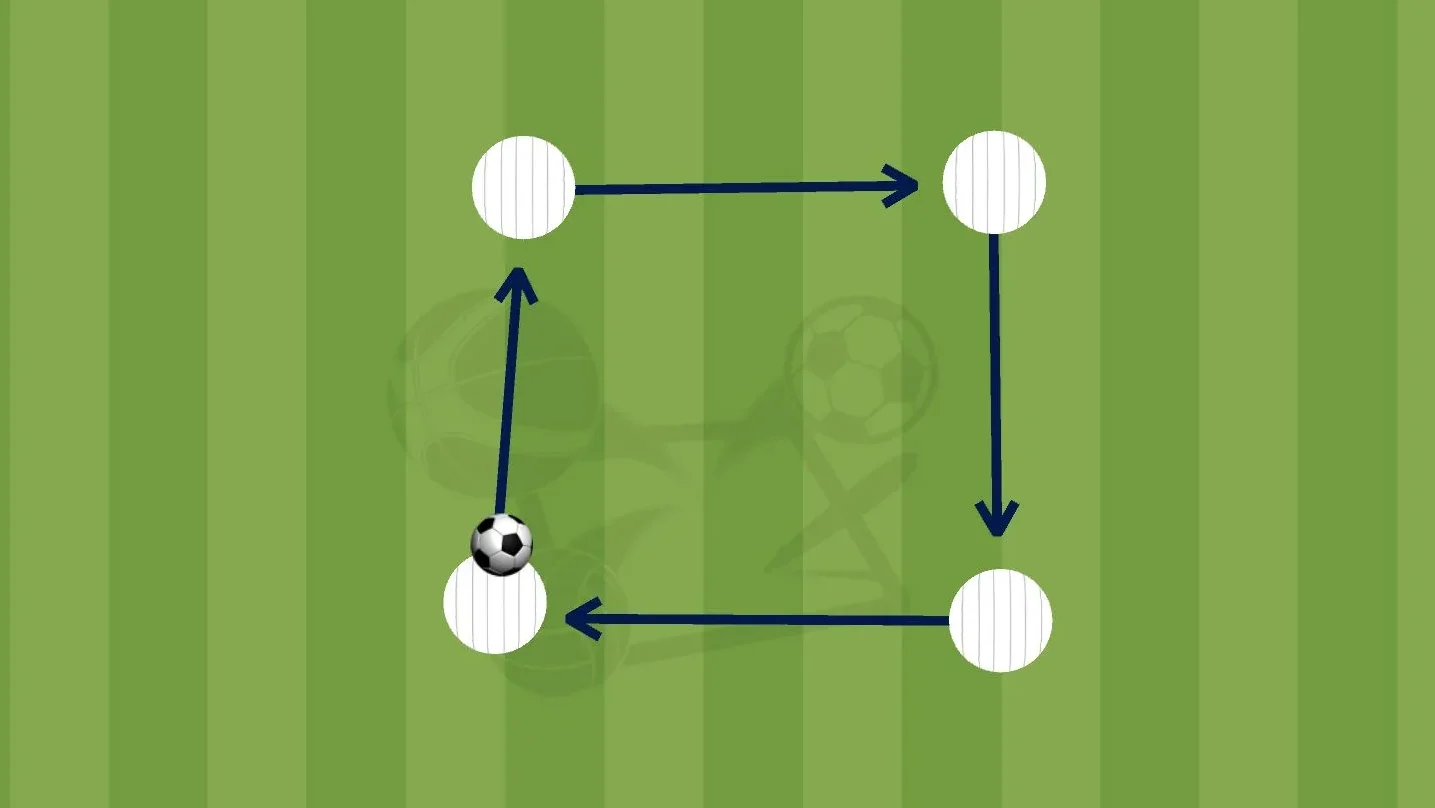
Progression:
- Reduce the square’s size to increase pressure.
- Introduce a passive defender in the middle to add stress.
- Use the weaker foot only or limit the number of touches even further.
Drill 2: Pass and Move Triangle Drill
Purpose: Improve passing accuracy, first touch, scanning, and movement off the ball.
Setup:
- Set up a triangle using cones (sides 8–10 meters).
- 2 players start on each cone.
- One ball is used.
Instructions:
- Player A passes to Player B, then immediately moves to the cone Player B just left.
- Player B takes a touch and passes to Player C, then moves to their cone.
- The pattern continues in a rotational flow, emphasizing constant movement and accurate passing.
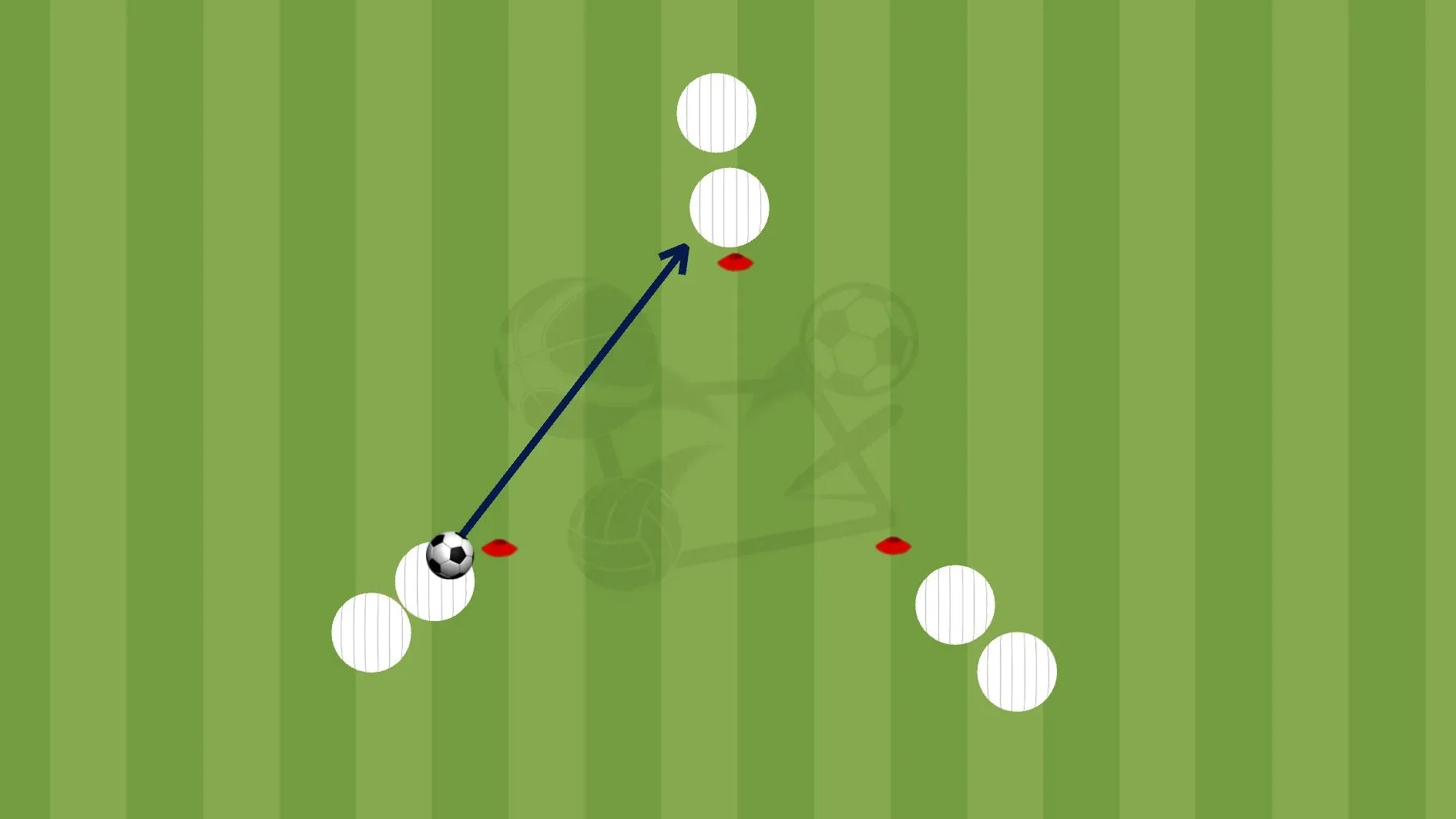
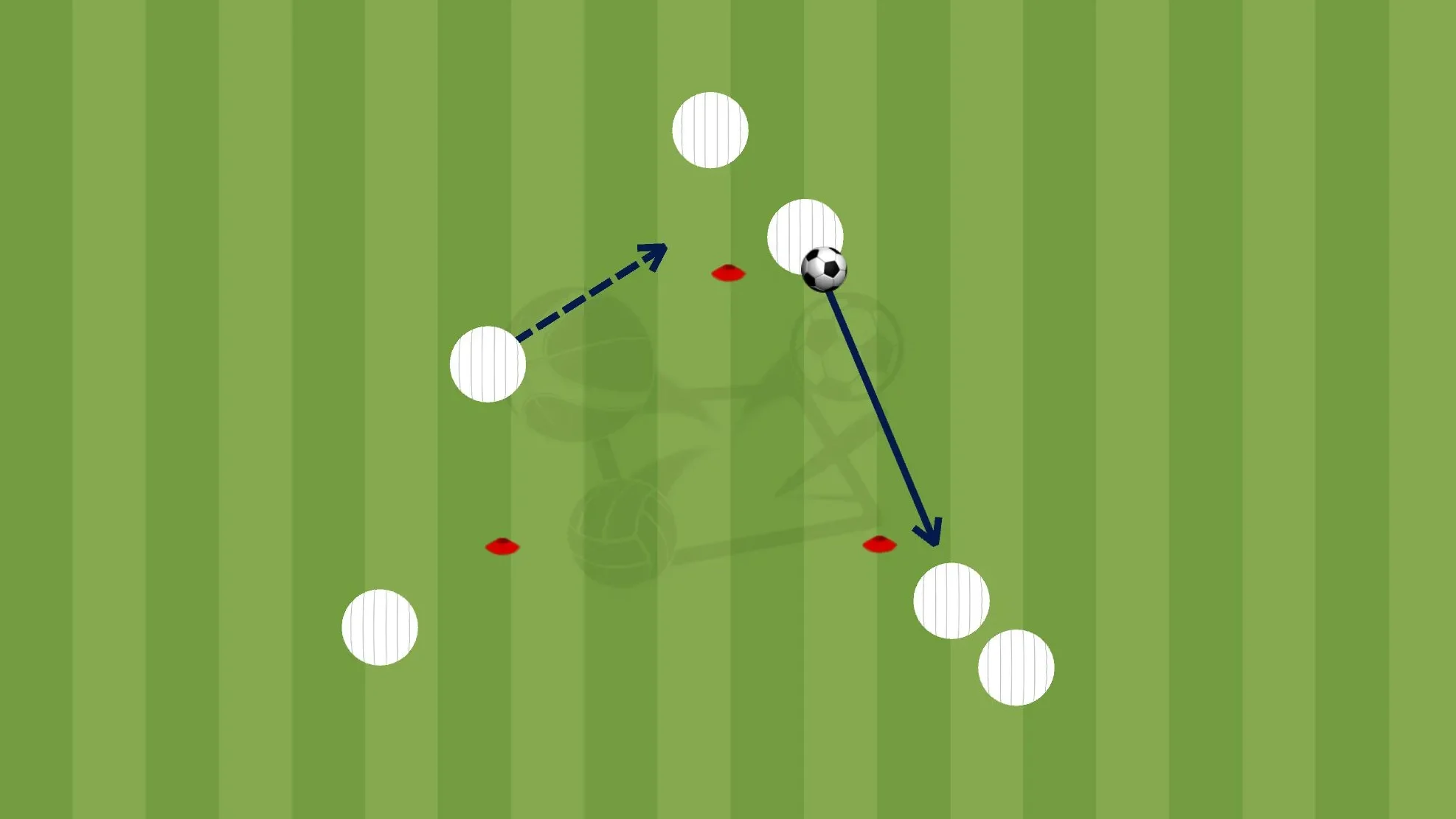
Coaching Points:
- Encourage players to scan before receiving and use open body positions.
- Passes should be crisp and well-weighted.
- Movement should be immediate after the pass – no standing still.
Progression:
- Make it one-touch for advanced groups.
- Add a coach or passive defender in the middle to encourage better angles.
- Introduce a “calling zone” where players must shout who they’re passing to, encouraging communication and awareness.
Drill 3: Directional Rondo with Targets
Purpose: Combine possession-based play with purpose-driven passing and scanning.
Setup:
- 6 players in possession vs. 3 defenders inside a grid (10×10 or 12×12 meters).
- Two target players are placed at opposite ends outside the grid.
Instructions:
- The possession team must complete a series of passes and then find a way to play to one of the target players.
- Once a target is reached, the ball returns and the pattern continues in the opposite direction.
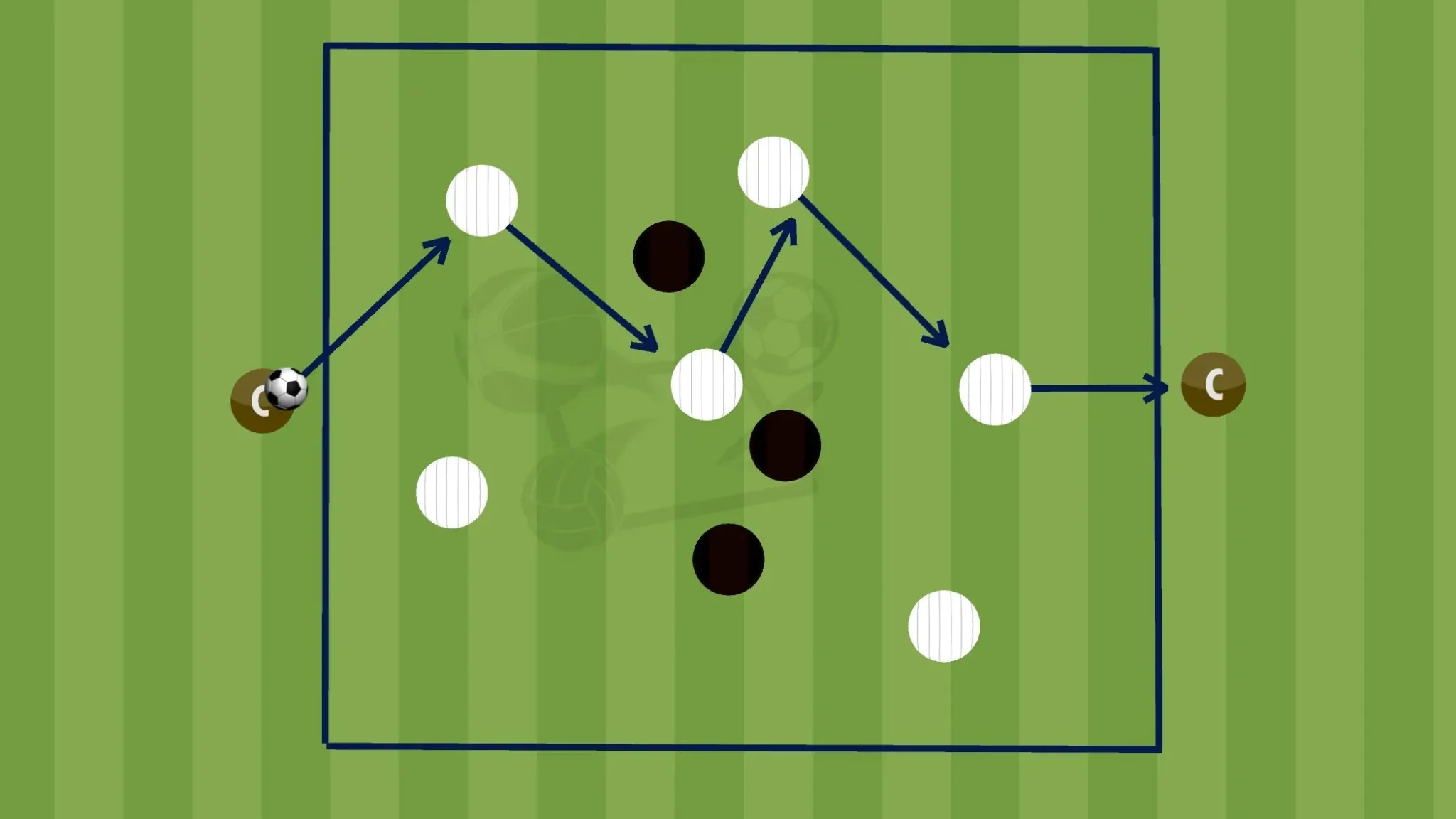
Coaching Points:
- Encourage off-the-ball movement to create angles.
- Highlight quick decision-making and timing of the final pass.
- Promote scanning for space and opponent movement.
Drill 4: Opposed Line-Breaking Drill
Purpose: Develop ability to play between lines under pressure and execute incisive, accurate passes at high speed.
Setup:
- Create three horizontal zones (defensive, midfield, attacking third).
- Use mannequins or players as passive defenders in the zones.
- Organize 3 players in each of the outer zones, with 2 midfielders in the middle zone.
Instructions:
- Teams must work the ball from the defensive zone to the attacking zone by playing through the midfield line.
- Midfielders must create angles and space to receive the ball between or beyond the opponents.
- Once the ball is received in the attacking third, reset to start again from the back.

Coaching Points:
- Emphasize weight and direction of line-breaking passes.
- Encourage midfielders to scan and move constantly to receive on the half-turn.
- Defenders should look to find the ideal moment to split lines, rather than forcing the pass.
Progression:
- Introduce live pressure from defenders.
- Limit touches for quicker execution.
- Add goals and finish with a shot or attacking action to replicate match scenarios.
Additional Coaching Tips
- Quality before quantity: Ensure each pass is technically correct before increasing the tempo or complexity of the drill.
- Use game-related constraints: Encourage realism by limiting time, space, and touches to replicate match intensity.
- Build gradually: Start with simple patterns and layer complexity over time.
- Encourage both feet: All players, regardless of position, should be comfortable passing with either foot under pressure.
- Use video: If possible, show clips of elite players demonstrating the concepts trained in each drill.
Conclusion
Passing is central to every phase of play in football – from buildup to final third penetration and transition. It reflects a team’s structure and a player’s understanding of the game. The drills outlined above are designed to improve both accuracy and speed while integrating tactical awareness and pressure, making them applicable across age groups and skill levels.
When coaching passing, always aim to connect technical training with real match contexts. Is the pass breaking a line? Does it follow a third-man movement? Are players receiving in open body shapes to scan the field? These are the questions that turn basic passing drills into powerful development tools.
For more detailed drills and tactical insights, explore our other articles in the Football Drills category.
